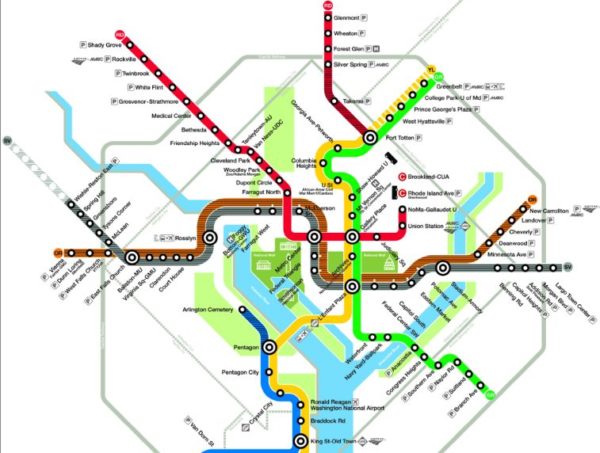Metro officials are sending an unusual, and perhaps alarming, message to commuters ahead of two weeks of major construction on the Silver, Orange and Blue lines: stay away, if you can.
Starting Saturday (Aug. 11) and running through Aug. 26, Metro will shut down the Blue Line completely starting at the Arlington Cemetery station, and single-track between the McPherson Square and Smithsonian stations. Officials expect that will result in 20-minute headways on the Orange and Silver lines “at all times,” and it’s urging riders to “only use Metrorail if you have no other option.”
That’s sure to create huge headaches for commuters all over Arlington, but county officials say there just isn’t much they can do to mitigate the impact of the track work.
“There’s just no way we can replace the capacity that’s going to be lost,” County Board Vice Chair Christian Dorsey, who also serves on Metro’s Board of Directors, told ARLnow. “There are alternatives, but the only way this is really going to work is if people who can and are able to find alternatives, do so.”
Dorsey suggested that some commuters could turn to Metrobus, or perhaps to Arlington Transit — Metro recommends ART’s 42 line between Ballston and the Pentagon and the 43 line between Courthouse and Crystal City, as both could help commuters transfer to the Yellow Line, which will have some enhanced service.
Dorsey added that the county will be able to bump up service on some ART routes reaching the city, but only slightly, noting “we just don’t have enough buses to be deployed” to fully compensate for the construction work.
Fundamentally, however, Dorsey expects “extreme crowding” and “incredible chaos” at Metro stations in D.C.’s urban core, particularly during the first few days of the track work before commuters fully adjust. That’s why he’d rather see people turn to teleworking, if possible, or adjust their commutes to arrive in D.C. a bit later than normal.
“We want to make sure to level-set expectations, and let them know that getting them there within an acceptable time frame not going to be possible,” Dorsey said. “But this is being done with the expectation, too, that fewer people will be affected at this time of the year.”
Yet some of Metro’s (many) critics suggest that WMATA isn’t doing all it could to make life easier for commuters as the work gets going. Stephen Repetski, a close Metro observer and contributor at Greater Greater Washington, has suggested that WMATA could “turn back” trains at select Silver, Orange and Blue stations, in order to ease the pain at stations outside of the work zone.
In particular, Repetski believes Metro could reverse trains at Arlington stations like Ballston or Clarendon, which would be a boon for county commuters. He argues that failing to do so “will result in severe, and unnecessary, service cuts for riders.”
Places where #wmata could turn Orange/Silver trains to provide more service outside of the single-tracking area:
– Ballston
– Clarendon
– Foggy Bottom
– McPherson
– Smithsonian
– Eastern Market
– Stadium ArmoryNot all are desirable locations, but all are feasible.
— Metro Reasons (@MetroReasons) August 5, 2018
But Metro spokeswoman Sherri Ly wrote in an email that turning back trains at Ballston, Clarendon, Foggy Bottom or stations in the eastern half of the city “would not address the capacity issues in the downtown core, requiring customers traveling to/from downtown D.C. to offload and board already crowded trains.”
“In this scenario, it could create dangerous crowding conditions on platforms as trains would likely be too crowded for customers to board,” Ly wrote.
As for McPherson Square and Smithsonian, Ly says “the location of the work zone” makes turning trains around at the stations a real challenge.
“The work zone…extends beyond the platform at both McPherson Square and Federal Triangle,” Ly wrote. “Turning a train would block trains coming through the single track, while a train offloads and turns back. For service efficiency, we would need both platforms to turn trains back.”
All those specifics aside, Dorsey reiterates that two solutions remain the simplest for commuters: “Either don’t ride, or temper your expectations.”
“If you’re able to do one or both, then you’ll be fine,” Dorsey said.


